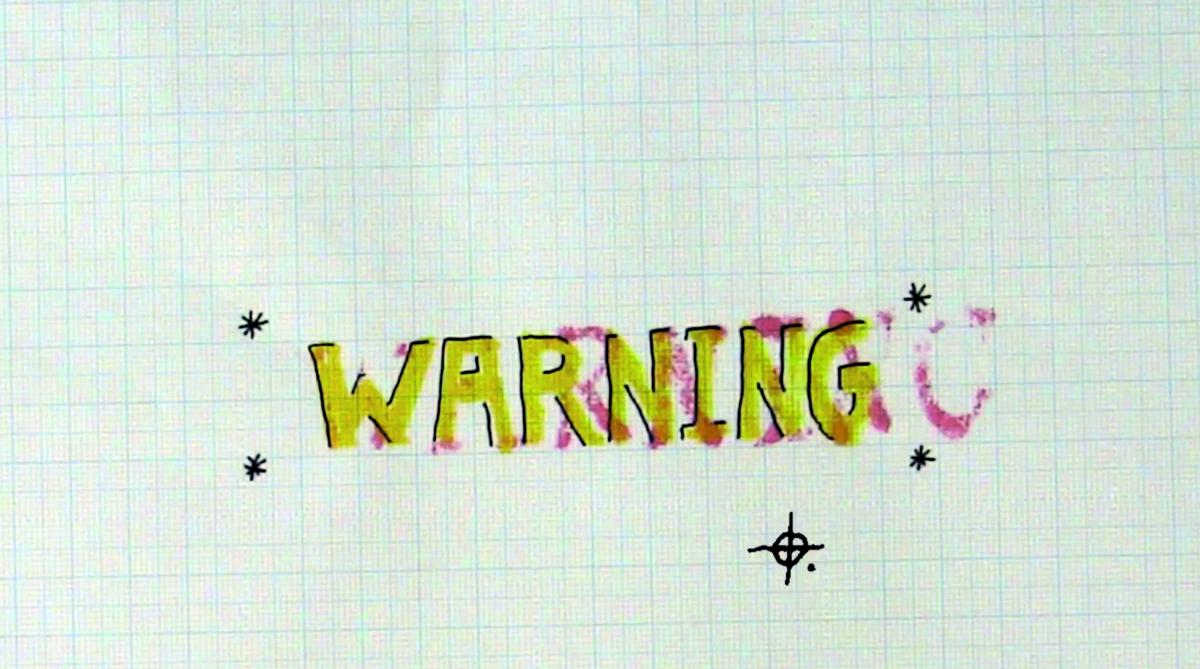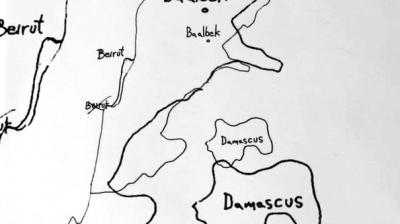
Elucidation Through Noise
Most Israeli Jews have only a sketchy idea of what goes on in neighboring Arab countries. What we know about them comes mainly from the media and the school curriculum, and usually falls under the rubric of «know thy enemy». Any possible interaction is mediated through the prism of military conflict. David Opp’s video «Sakata Helicobtir Min Tiraz Sikorsky» confronts this paranoid anticipation of war: the warnings and attempts at remote control, experiences of the Other through abstractions like maps, heads of state, standardized language, and propaganda. A commentary from the Norient book Seismographic Sounds (see and order here).
The clip is based on a phrase that the artist learned and memorized in 7th grade: «a Sikorsky helicopter has crashed north of Damascus and the pilot has ejected.» Against a militarized, aloof, and objectivized voice, the video plunges itself into the void opened up by the machine’s failure, into which the pilot jumped. It is a video clip enacting a crash.
Aesthetics Borrowed from Cartography
Like a punk and shell-shocked version of Roy Lichtenstein’s «Whaam!» Opp uses aesthetics borrowed from cartography, comic books and technical illustrations only to crush their cool distanciation. How do you penetrate the image, how do you feel the flames, the shards, the panic, the sharp needles of the rapidly approaching cedars? Serene and beautiful frames recalling 1970s conceptual and minimalist art flash by, drowned out by relentless audiovisual noise that effects a growing sense of alarm. The Arabic-tinged track sounds metallic, compressed, and distorted, like desperate signals shouted on military radio.

Leading to Nowhere But Destruction?
A line is a demarcation, a barrier. It can be an instrument of injury – forming the crosshairs of a sight, blotting out suspicious transmissions, redrawing territorial boundaries. But Opp’s drawings refuse to toe the line. Broken, hesitant, they line up only to quickly disintegrate. These images are unstable, constantly moving, freefalling in space. Resolution is lost by generations of processing. The sheets of tracing paper refuse to coalesce; the varying visions refuse to realign.
Hurtling towards its end, «Sakata Helicobtir» seems to lead to nowhere but destruction. But the point of impact is no less fragmented, contested, multi-layered, and after the clip finishes we still hear the players’ voices commenting on the take. Experiencing the fall of the other, shattering the official line, and taking in the strangeness of a foreign language, Opp’s video opens up the possibility of a proper conversation. «Turn off the amplifier», says one of the performers; and let’s see what we can hear.
This text was published first in the second Norient book Seismographic Sounds.
Biography
Shop

Published on September 11, 2017
Last updated on May 01, 2024
Topics
Why New Yorks’ underground doesn’t give a fuck about Trump or why satirical rap in Pakistan can be life threatening.
About Tunisian rappers risking their life to criticize politics and musicians affirming 21st century misery in order to push it into its dissolution.
How does Syrian death metal sound in the midst of the civil war? Where is the border between political aesthetization and inappropriate exploitation of death?

